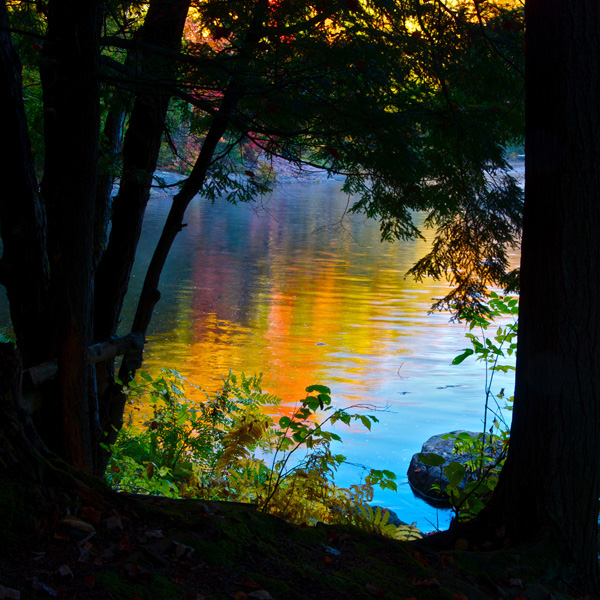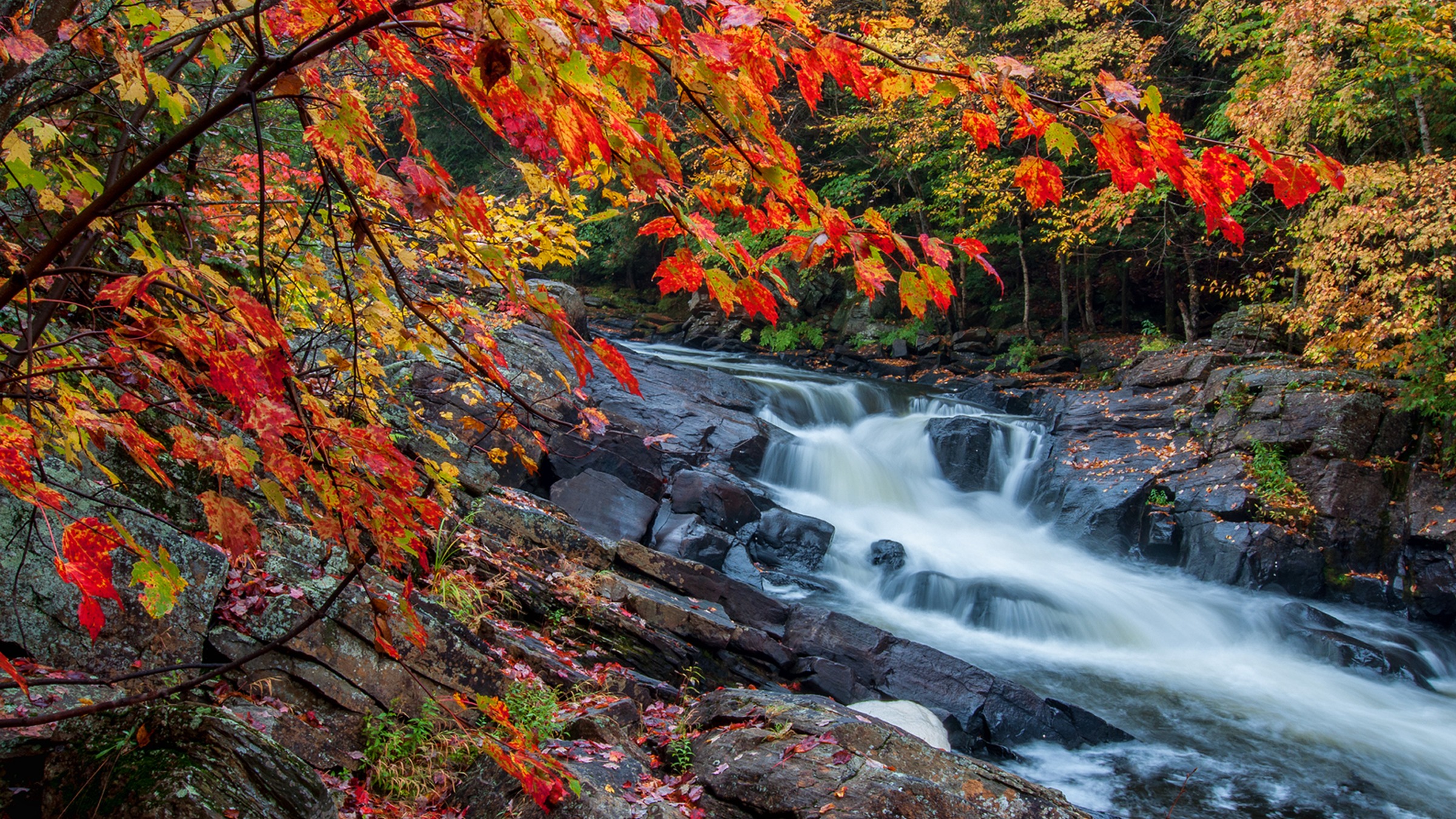Why Leaves Change Colour
We all talk about how spectacular the fall colours are, where to go for best viewing, take a thousand photos and it’s onto the next thing – but did you ever think about why the leaves actually change colour?
Nature’s pretty cool when you think about it. All the life cycles it goes through throughout the year. But who can argue that the prettiest one is the changing of the colours – which we can look forward to every year.

So why do the leaves change colour?
Robin Tapley, Naturalist and Wildlife Photographer at the Algonquin Wildlife Research Station in Algonquin Park – and long-time wilderness adventurer – says that as the days get shorter and the temperature drops, leaves stop their food-making process. Diminishing sunlight triggers the tree to begin the process of shutting down food production.
But what does that mean? Our expert Tapley explains: “Leaves contain little pockets that make the food they need to stay green. They contain chlorophyll, the green life force of plants. As fall progresses, the chlorophyll breaks down and the green colour disappears. Then yellow and orange colours become visible and transform the leaves into their fall splendour. At the same time other chemical changes occur which give rise to the reddish, purplish and brown fall colours of trees such as sugar maples, sumacs and oaks, while others like birch trees produce a brilliant yellow.”

What makes a good season for fall colours?
The last number of years, the fall colours in Muskoka have been incredible, but what determines a good season for fall colours? “Temperature and light have an influence on the degree and the duration of fall colour,” Tapley says. “For example, low temperatures above freezing will favour anthocyanin formation, producing bright reds in maple trees, and diminishing sunlight triggers the tree to begin the process of shutting down, i.e. change colours.”

What makes Algonquin and Muskoka one of the best spots in Ontario to see the fall colours?
“It’s simple really – the diversity of trees and abundance of maple trees combined with the topography and multiple lakes makes for amazing opportunities to enjoy and photograph the fall colours,” Tapley says.
Experiencing the fall colours in Muskoka is truly amazing as nature begins its greatest show and the dense forests surrounding the pristine blue lakes come to life.
Plan your fall getaway and head to Deerhurst Resort, just minutes from Algonquin Park. Check-out all your need-to-knows and book your Experience Algonquin Package now.
 Robin Tapley is the Naturalist and Wildlife Photographer at the Algonquin Wildlife Research Station in Algonquin Park, long-time wilderness adventurer and has dedicated his life to sharing the wonders of the natural world with others . His career as a naturalist has spanned over 20 years and has taken him to some of the world’s most remote destinations. Robin is the co-founder and professor of a unique Naturalist /Adventure Program offered at Fanshawe College. Closer to home he works as the onsite Wildlife Photographer and Naturalist at the Algonquin Wildlife Research Station and leads a variety of unique interpretive and wildlife photography adventures throughout the year. Learn more here. Check out Robin’s Instagram for more unique photos of Algonquin and Muskoka’s unique wildlife and landscapes.
Robin Tapley is the Naturalist and Wildlife Photographer at the Algonquin Wildlife Research Station in Algonquin Park, long-time wilderness adventurer and has dedicated his life to sharing the wonders of the natural world with others . His career as a naturalist has spanned over 20 years and has taken him to some of the world’s most remote destinations. Robin is the co-founder and professor of a unique Naturalist /Adventure Program offered at Fanshawe College. Closer to home he works as the onsite Wildlife Photographer and Naturalist at the Algonquin Wildlife Research Station and leads a variety of unique interpretive and wildlife photography adventures throughout the year. Learn more here. Check out Robin’s Instagram for more unique photos of Algonquin and Muskoka’s unique wildlife and landscapes.

